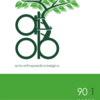Excellent survival of two anatomically adapted hydroxyapatite coated cementless Total Hip Arthroplasties. A mean follow-up of 11.3 years
cementless; femoral implant; long-term follow-up; survival; total hip arthroplasties; anatomically adapted
Published online: Apr 23 2024
Abstract
There are many different types of cementless anatomically adapted Total Hip Arthroplasties (THAs) on the market, the Anatomic Benoist Gerard (ABG) I and II are such types of cementless THAs. In this retrospective single-centre study we evaluated the overall survival with revision for any reason and aseptic loosening as endpoint at more than 11 years follow-up. Between 2000 and 2004, 244 cementless THAs were performed in 230 patients in a primary care hospital. At a mean of 11.3 years follow-up (range 9.8 – 12.8 years) clinical examination, plain radiography and Patient Reported Outcome Measures (PROMs) were obtained and analysed. The PROMs consisted of the Oxford Hip Score (OHS) and the Western Ontario and McMaster University Index (WOMAC). At a mean of 11.3 years follow-up 32 patients (13.1%) had died of unrelated causes. Of the remaining cohort all 198 patients (212 THAs) have been reached for evaluation. There were no patients considered as lost to follow-up. At a mean of 11.3 years 11 patients (11 THAs) have had a revision of either the femoral implant or acetabular component resulting in an overall survival of 95.5%. There was no statistically significant difference (p=0.564) in survival between the ABG I and II THAs. Radiographic there were no changes between the ABG I and II last follow up. The ABG II performed statistically significant better in PROMs. We concluded that both anatomically adapted hydroxyapatite coated cementless THAs show excellent survival at more than 11 years follow-up.
